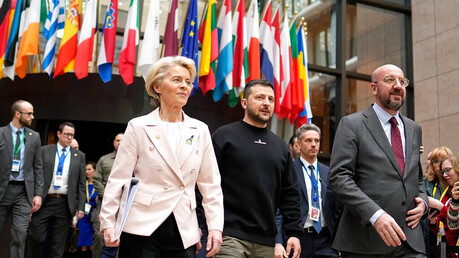
SEOUL—In a time when auditory overload is the norm, composer and performer Ahn Sang-wook is forcing listeners to reconsider their relationship with sound. His latest work, the one-hour-long music performance ‘12 Sounds’, is not just a concert but a sonic manifesto, using a cacophony of recorded everyday noises—from machine whirs to the babbling of a child—to create a complex four-movement piece. Ahn, a member of the crossover band Gorae-ya and a percussionist, uses the style of musique concrète to express his deep concerns about a world saturated with noise.
A Deluge of Sound, a Crisis of Listening
A rehearsal in a Mapo-gu studio offered a glimpse into Ahn’s intricate soundscape. From 12 spatially distributed speakers, a light percussive beat emerged from one corner, soon joined by murmurs, a mournful Gugak melody, a gentle piano passage, and snippets of radio voices and a baby’s cooing from the others. The atmosphere evoked a classic, almost nostalgic film. This momentary harmony, however, was dramatically shattered as all 12 speakers began to blare simultaneously, resulting in a sudden, overwhelming wall of noise.
“The piece stems from the fundamental question of why there is too much music and sound in the world today,” said Ahn Sang-wook (42), who is responsible for the work’s conception, composition, and real-time performance. The concert, scheduled for October 18 and 19 at TINC in Seoul, is part of the 2025 Seoul International Performing Arts Festival (SPAF).
Ahn’s composition deliberately mirrors the tempo and structure of Arnold Schoenberg's controversial String Quartet No. 2, first performed in 1908. Using a custom-designed controller, Ahn manipulates and distorts the sounds assigned to each speaker in real-time.
Ahn argues that the proliferation of sound has led to technologies like noise-canceling and algorithmic recommendations, enabling individuals to delete unwanted sounds and repeat only the preferred ones. “It has become routine to filter our auditory experience,” he noted. “The unfortunate consequence is that some children today can barely recognize the sound of wind or flowing water. This is the dark side of the listening technology we have developed over centuries.”
'Ages in Sound': Memory and Meaning in Noise
The sounds themselves were meticulously collected by Ahn from 12 fellow musicians he interviewed. Each collaborator was asked to share a sound file of particular personal significance, becoming the compositional raw material. The recordings are diverse: a Gayageum player’s childhood classical radio broadcast, an electronic musician’s recording of a machine hum from Hongseong, and a guitarist’s clip of his infant’s babbling.
These sonic fragments are then fractured, layered, and subjected to extreme manipulation, speeding up by as much as eight times or being chopped into tiny micro-segments.
For Ahn, these sounds are more than just acoustic data; they are vessels of memory. “Sound holds the memories of bygone ages,” he asserts, which is why a specific sound can trigger past emotions and carry different, personal meanings for every listener.
The composer’s final message to his audience is a call to action: “Sound is only truly completed when the act of hearing follows its creation. I hope this performance prompts the audience to reflect on the sounds they have heedlessly encountered. They should ponder the sound environment they are immersed in and the sounds they hold affection for.”
Supported by the Art Korea Lab, ‘12 Sounds’ is a potent critique of modern consumption—not just of goods, but of the very airwaves around us. It is a demanding work that asks for conscious listening in an age of effortless filtering.
[Copyright (c) Global Economic Times. All Rights Reserved.]




























